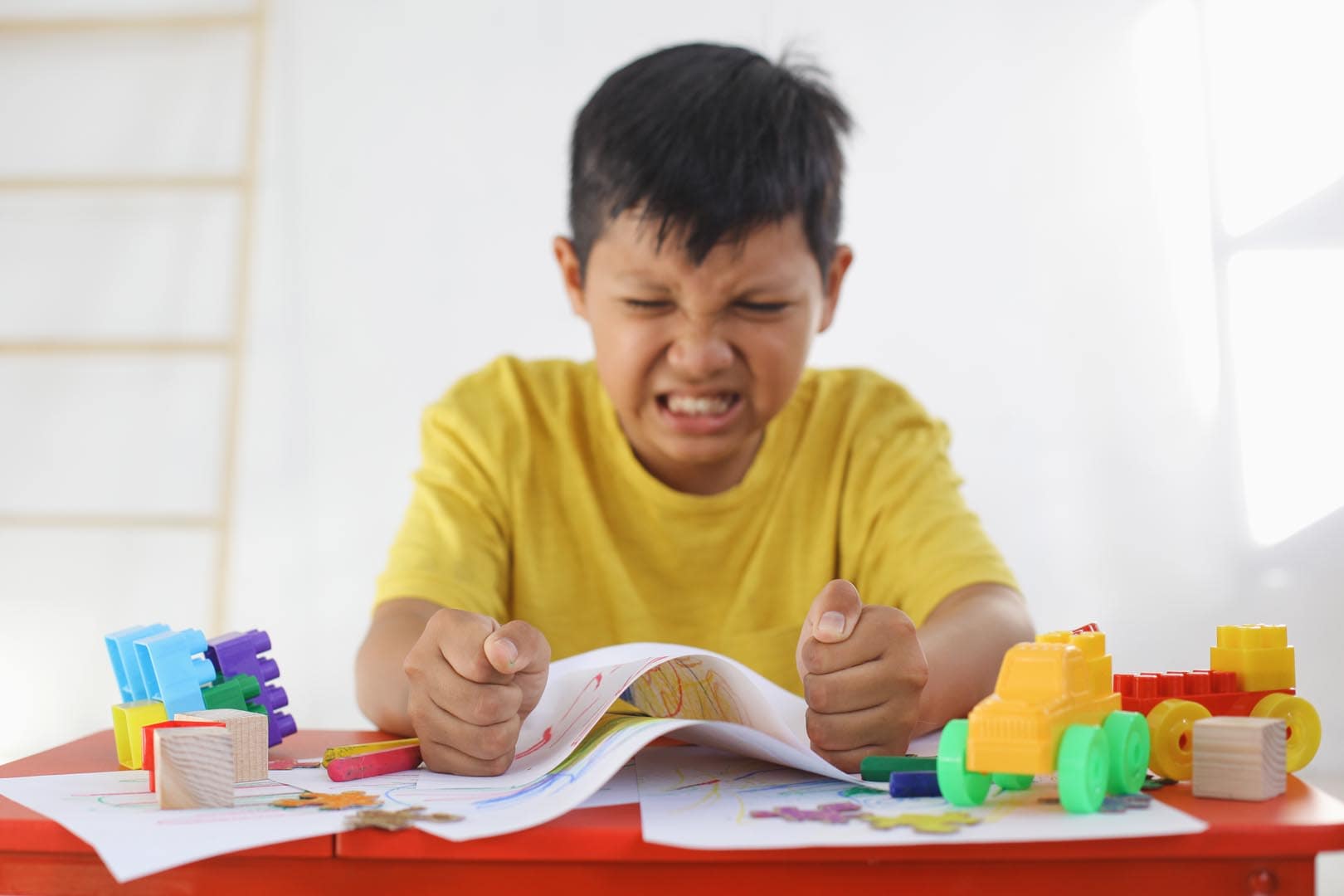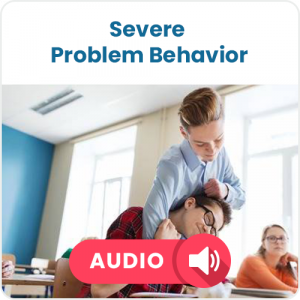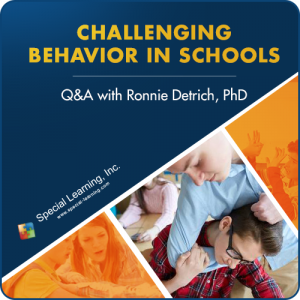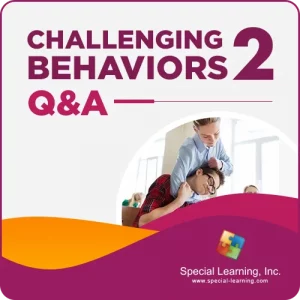Autism and Aggressive Behavior – Intervention Strategies for Physical Aggression
When a child engages in physical aggression, an immediate response is required, especially if the target of the aggression is a person. A lack of preparedness can result in a spontaneous reaction that may exacerbate the aggressive episode. The following techniques can help safely end physically aggressive episodes and deter repeat performances of physically aggressive behavior.
Common forms of physical aggression include:
Hitting – Hitting can range from slapping with an open hand to punching with a closed fist, with extreme force. Hitting can cause injury ranging in degrees of severity, such as bruising, broken skin, fractured or broken bones, or concussions.
Kicking – Another common form of aggression displayed by children with autism is kicking. Kicking can range from tapping another person with the foot, to driving the foot forward with extreme force. It can cause injury ranging in degrees of severity, such as bruising, broken skin, fractured or broken bones, or concussions.
Scratching – Scratching can range from fingernails lightly raked over exposed skin, to fingernails dragged across exposed skin with applied pressure. It can cause injury ranging in degrees of severity, such as bruising, broken skin, and scarring.
Hair pulling – Hair pulling can range from several individual strands of hair secured between two fingers, to large sections of hair secured within a closed fist. Hair pulling can occur at varying locations of the strand of hair, particularly when it is long; this includes hair secured at its root, as well as at its end. Hair pulling can cause injury ranging in severity, such as bleeding at the hair loss site or, when hair is removed repeatedly from the same site, baldness.
Biting – Another common form of aggression displayed by children with autism is biting. Biting can range from a part of the body coming into brief contact with a child’s teeth, to the closing of a child’s mouth with extreme force, around a part of the body. Biting can cause injury ranging in severity, such as broken skin, bruising, bleeding, or scarring, and can lead to infection or other medical situations requiring prolonged medical attention.
To effectively neutrally redirect such physical behavior, the adult can prevent the child from making contact with her body by moving out of the child’s range of motion. When moving away from the child is not possible, the adult may need to protect more vulnerable parts of her body with her own hands, arms or legs; or by altering the position of her body relative to the child. After the adult has successfully avoided injury and the child has stopped aggressing, she will then guide him to engage in an appropriate task. It is very important that the adult not react to the child with exaggerated body movements or a change in facial expression.
If the adult knows of situations in which the child is most likely to engage in physical aggression, it is important for her to be prepared for this possibility. Arranging the environment so that the child has fewer opportunities to hit, kick, scratch, pull or bite is advisable. Strategies include staying within an arm’s or leg’s length of him; keeping him seated at a table for instruction, possibly with a barrier in the front of the table; teaching him from across the table outside his range of motion; teaching from a standing position while he is seated; guiding him to sit with his legs crossed when seated on the floor
More specific behavioral interventions include:
For scratching, the adult may choose to cover exposed areas of her body with multiple layers of clothing, or my desire for the child to wear clothing (such as gloves) that inhibits his ability to scratch but continues to allow him to successfully manipulate teaching materials. Additionally, adults may assist the child in keeping his fingernails shorter in length, to minimize potential injury to others who may be scratched.
For hair pulling, when moving away from the child is not possible and the child is successful in pulling hair, it is important for the adult to stay calm and not pull her own body away from the child. Pulling away from the direction of the child as he pulls hair will increase the likelihood that hair will be lost from the site of growth, and will maximize the amount of pain or discomfort (as well as any potential tissue damage) incurred by the injury. The adult may choose to keep long hair pulled up close to her hair, to prevent the child from coming into contact with her hair should he attempt to pull it.
For biting, when moving away from the child is not possible and the child is successful in biting, it is important for the adult to stay calm and not pull her own body away from the child. Pulling away from the direction of the child as he bites will maximize the amount of pain or discomfort (as well as any potential tissue damage) incurred by the injury. Additionally, the adult may choose to cover exposed areas of her body with multiple layers of clothing.
These techniques provide an adult with the safest manner to avoid injury from hitting behavior without needing to physically intervene.
When the child is around other children, it is very important to monitor his interactions at all times. Because the sibling or peer will likely react to the child’s hitting behavior, it is important to teach them to excuse themselves from the child’s proximity immediately.
Copyright © by Special Learning Inc. All right reserved.
No part of this article may be reproduced in any manner whatsoever without written permission except in the case of brief quotations embodied in critical articles and reviews. For information, contact Special Learning Inc., at: contact@special-learning.com








